
Natural Material Studio develops Shellware ceramics from leftover seashells
Designer Bonnie Hvillum's Natural Material Studio has created conceptual ceramics from clay made out of powdered seashells from Denmark's Noma restaurant.
The Copenhagen-based designer teamed up with the restaurant, which is known for its locally sourced produce, and ceramicist Esben Kaldahl to develop the seashell-based material.
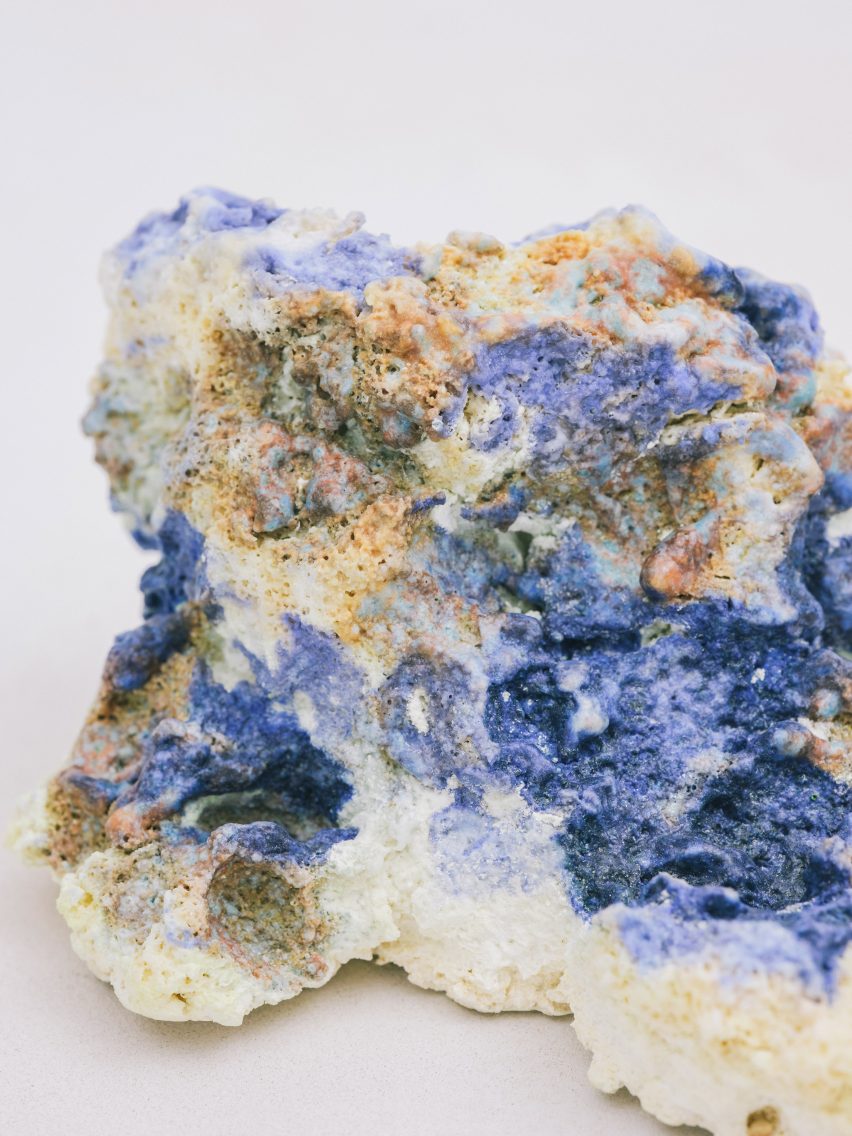
The Shellware project used donated leftover scallop and other seafood shells from Noma to create the crockery.
"I was curious to work with seafood shells and explore the possibilities, and also how they could be brought back into the restaurant in a new narrative," Hvillum, who is the founder of Natural Material Studio, told Dezeen.
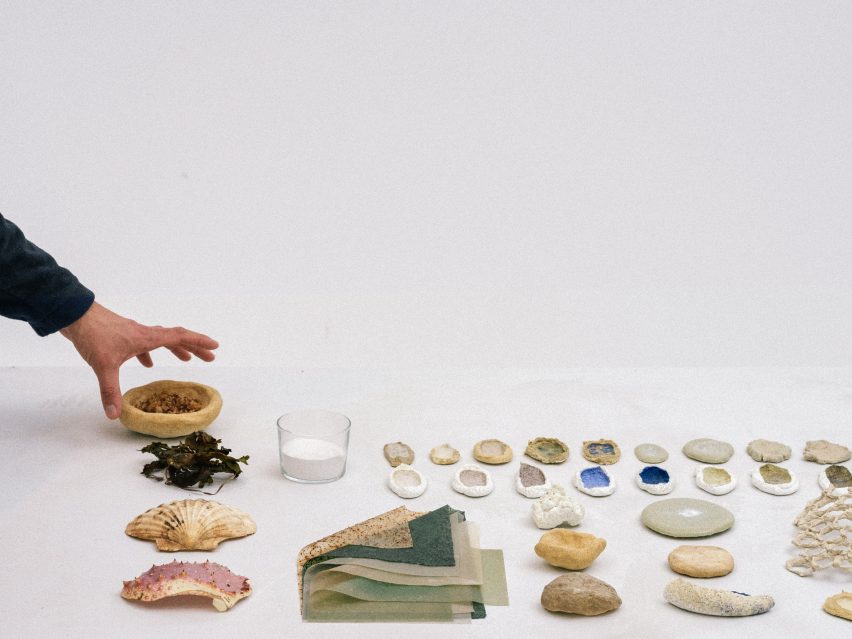
She based her material research on learning the properties and build-up of different types of shells.
"I connected with marine experts from Kristineberg Marine Center in Sweden to understand the shells better," Hvillum explained.
"And from there follows several material experiments based on hypotheses I build from all the different knowledge I have gathered."

She discovered that the calcium carbonate seashells could be turned into calcium oxide by heating the shells. This creates a similar base material to bone ash used to make bone china.
"When I started heat-treating the shells to 900 degrees, all organic matter was burned away, and I started to understand what was left – the pure calcium oxide," she explained.
"From the shells that I received from Noma, the scallop shells were the ones that contained most calcium oxide."
As well as scallop shells, Hvillum also received sea-snails, king crabs and sea urchin shells, which she used to create ceramic glazes in different colours.
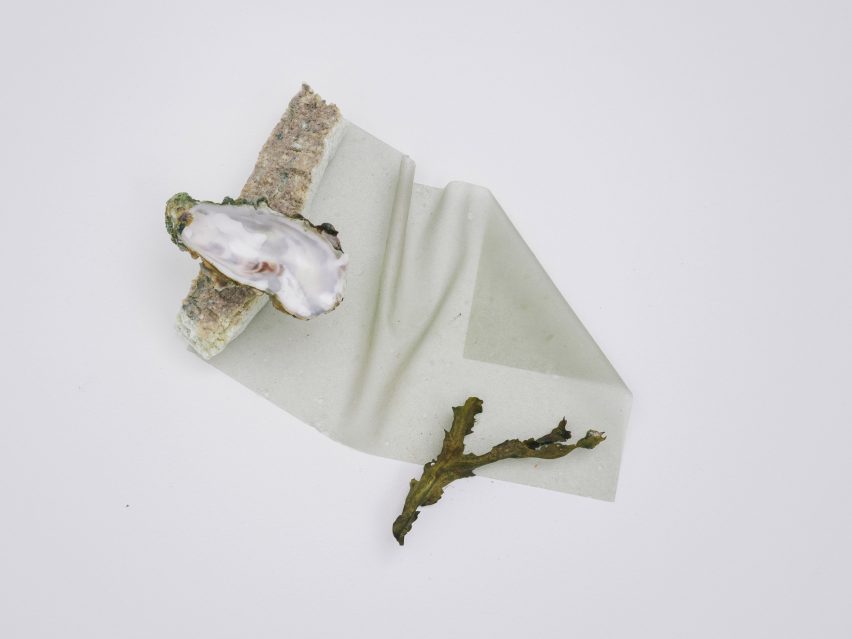
After being exposed to the strong heat, the calcinated shells were finely ground to a powder and mixed with natural elements to support the clay body.
Calcinating the shells by heating them also reabsorbs the carbon dioxide, making the process itself carbon-neutral.
"It's an industrial process used commonly to create quicklime by heat-treating chalk to remove the carbonate from the calcium," Hvillum explained.

"When the pure calcium oxide goes in reaction with water, it re-absorbs the CO2 in the setting time, and therefore changes its build-up," she added.
"That chemical reaction is what makes the calcium oxide useful and an excellent binder, for example in hempcrete. In this case, I used it instead of bone ash as a chalk substitute in my own ceramic ware recipe."
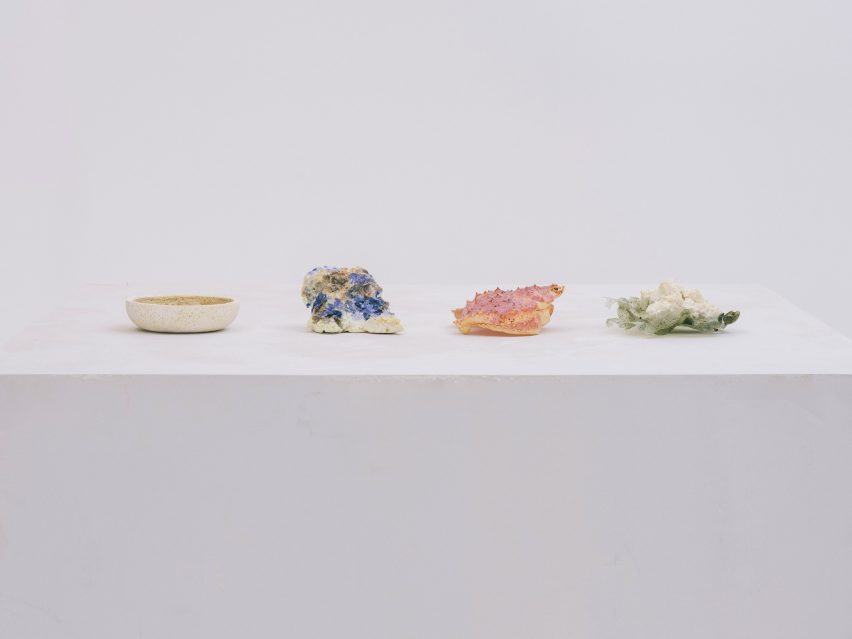
During the research, Hvillum developed a number of different clays, including clays that look like coral and a clay that functions as a glaze.
As part of the project she also created a biodegradable seaweed textile that can be used as a matching table mat or cloth. These are made with seaweed extract and a natural softener, before being hand-cast in frames and cut.
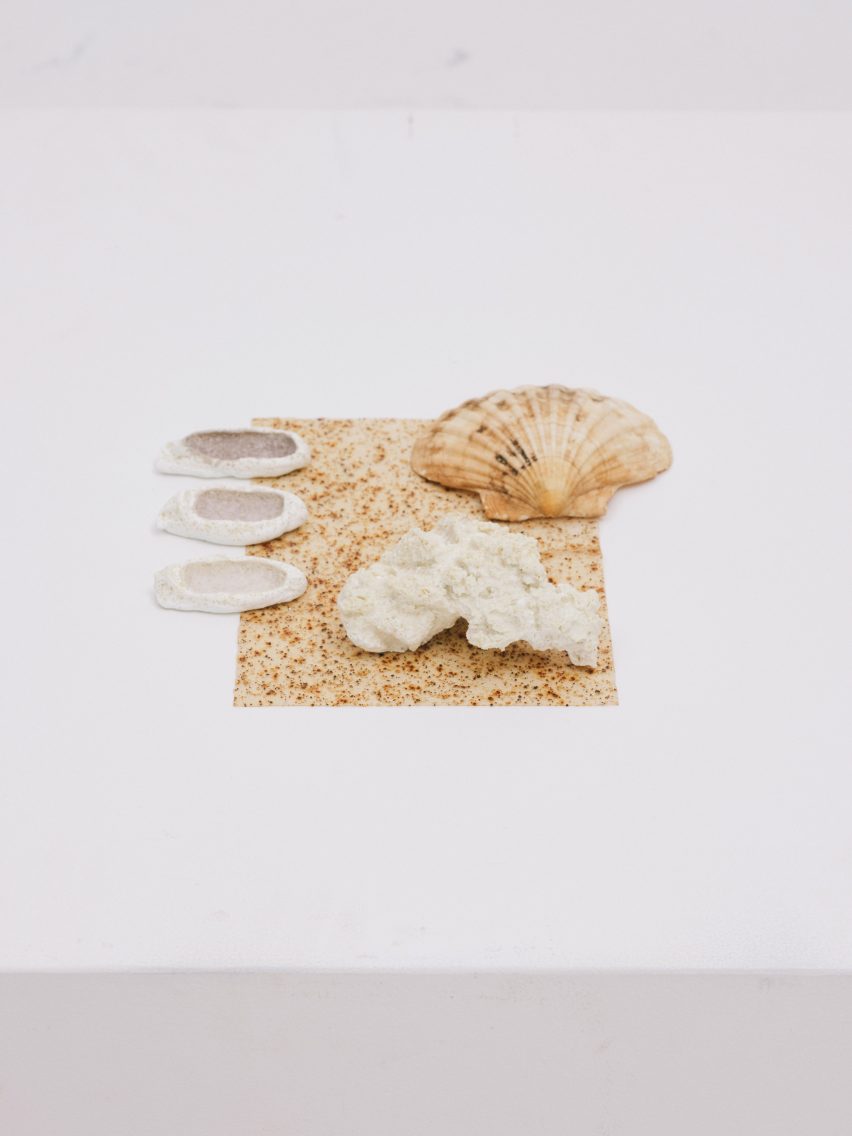
The material biodegrades within a few months if left out in nature and as it is circular, the textiles can be continually recast.
Hvillum and Kaldahl hope to continue developing the Shellware ceramic prototypes for other restaurants, as well as the consumer market.
The designer has previously created Foame, a chair made from bio-foam that resembles stone and was shown as part of the Ukurant Objects exhibition at design festival 3 Days of Design.
Photography is by Peter William Vinther.